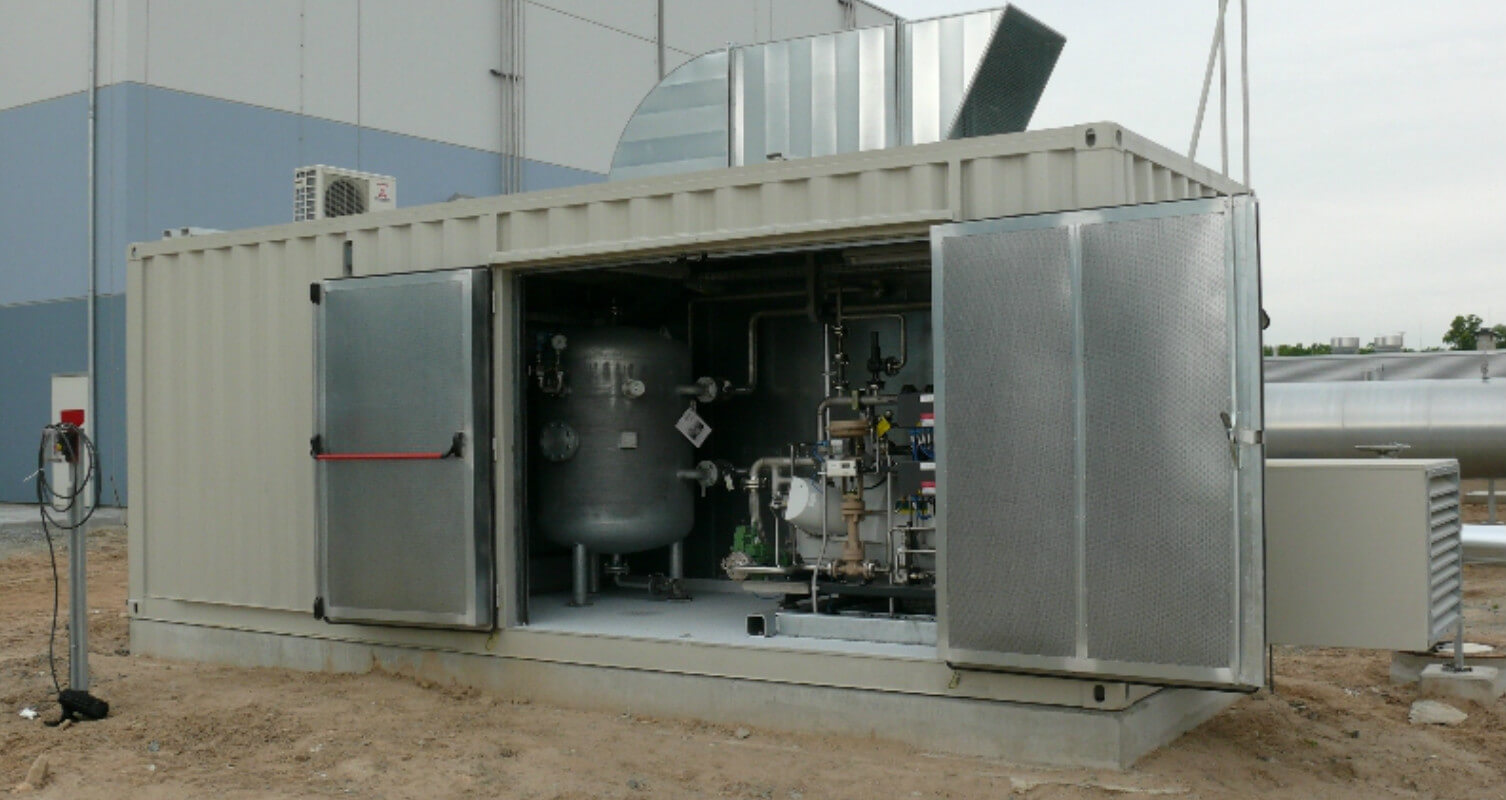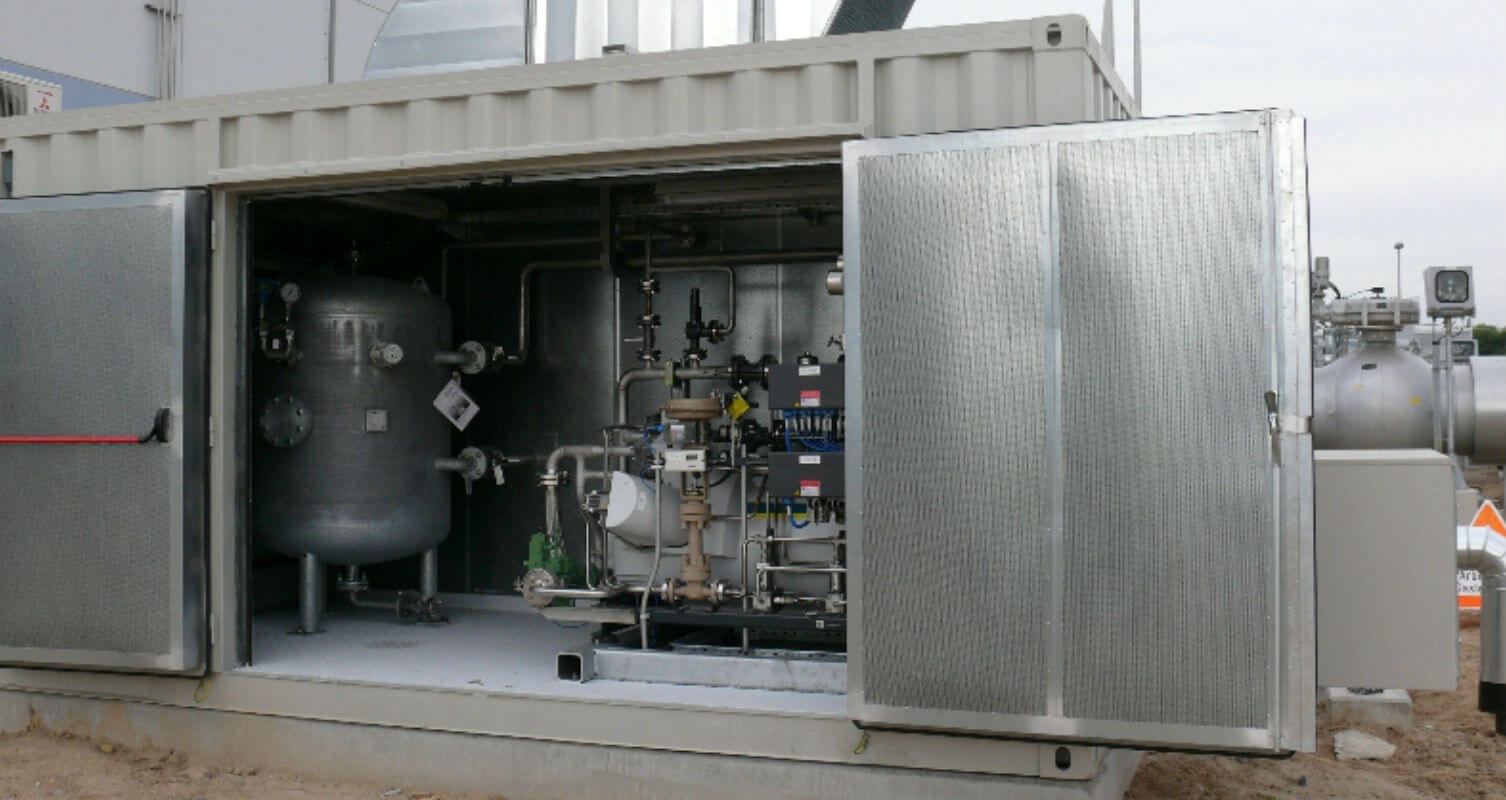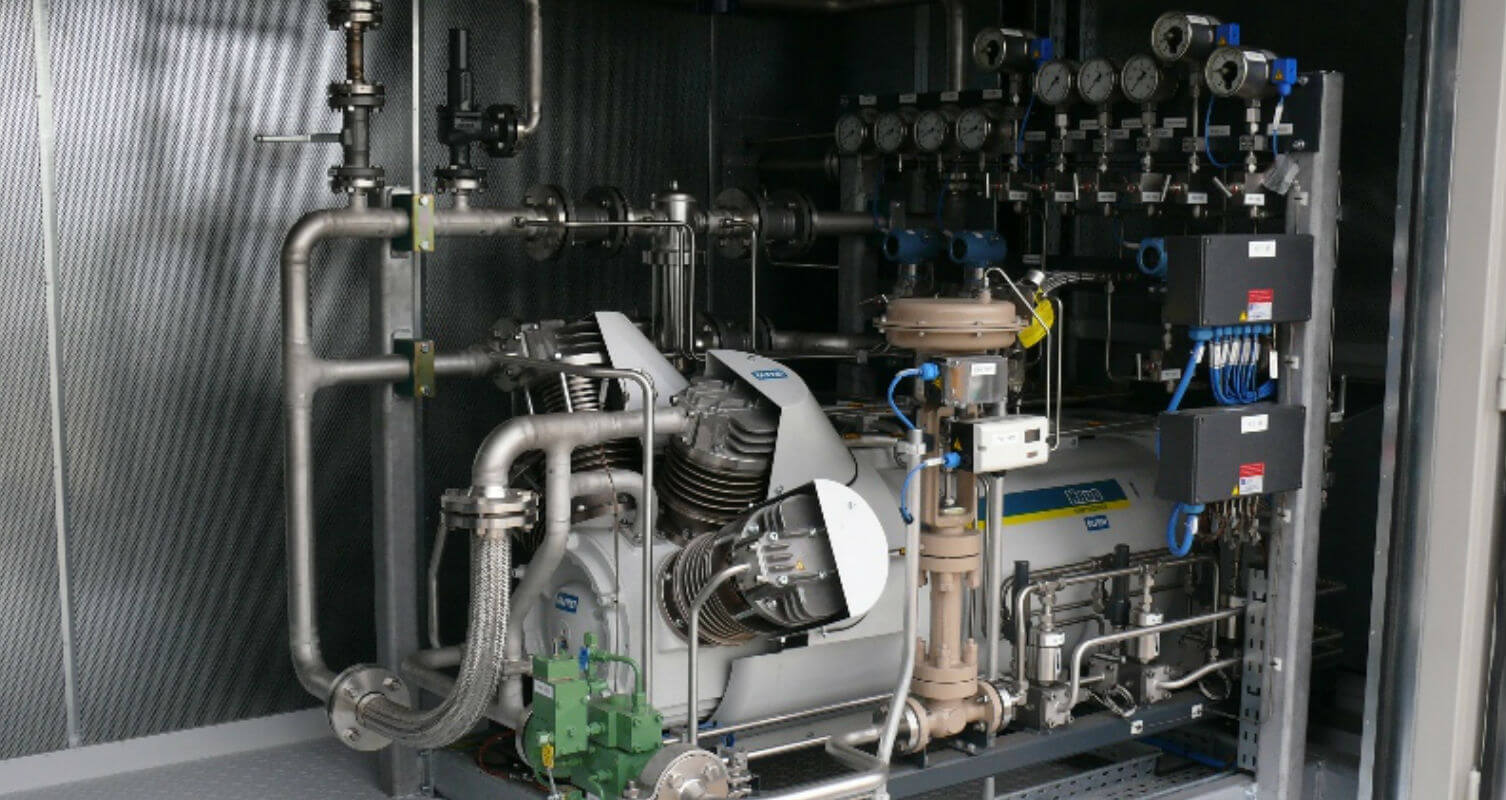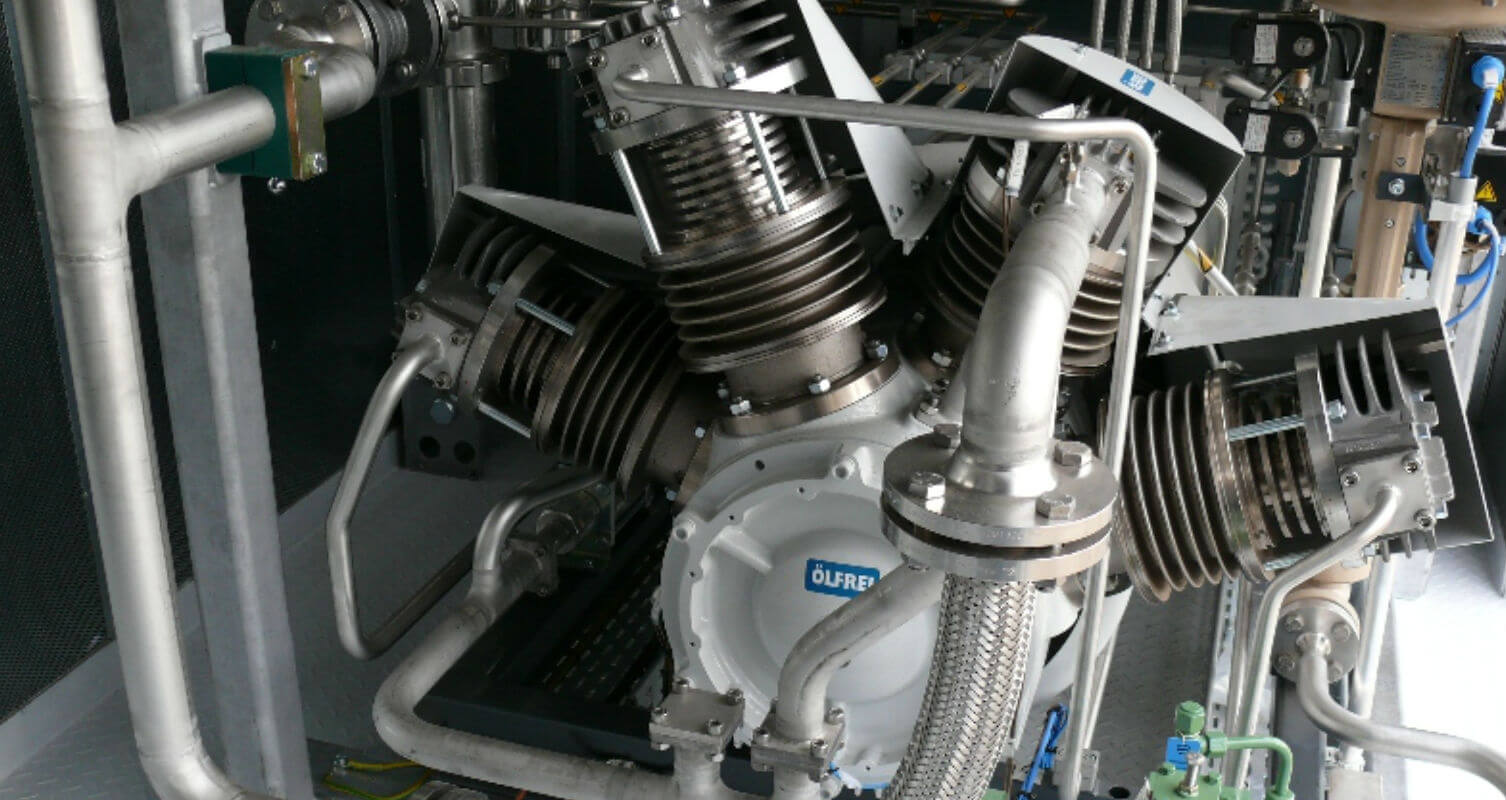Natural gas compressor
Natural gas recovery from gas leakage on turbo compressors
Starting position / boundary conditions
Due to the environment protection and more restrictive laws exists worldwide a requirement to avoid leaks or collect leakage gas and lead them back to the process (closed system).
The environmental guidelines prohibit leakage of natural gas or the burning of natural gas on torches. Therefore, the gas leakage must be collected in large compressor drive shaft seals and compressor gland packings and returned to the natural gas network.
In reference example, our client is one of the largest German energy companies. But in other cases, customers can also be the supplier of large compressors, which offer the leakage gas compressor as an option to their main compressor.
Requirements
The suction pressure in the application is from 1 to 4 bar(abs) and the final pressure at 60 to 70 bar. The flow rate is in the range of 100 Nm3/h.
The leakage gas comes from shaft sealing on the drive shaft from different turbo compressors. The turbo compressors increase the pressure in the main gas pipeline. The leakage-gas quantity can vary widely and depends on the operation of the centrifugal compressor and the wearout of the shaft sealing.
The system must be designed for continuous operation and the leakage gas quantity variably compress back into the main gas pipeline. Demanded are very reliable and maintenance-friendly compressors.
HAUG Sauer Solution
The solution of HAUG Sauer includes a complete system in a container consisting of a leakage-gas storage tank, a 4-stage process gas compressor and an electric control unit.
The key arguments for HAUG Sauer were: high reliability, strong experience in leak-gas compressors, oil-free and gas-tightness, process gas compressors individually tailored to the customer, turn-key solution with electric control unit and container.
Natural gas as an environmentally friendly energy source
Natural gas is a naturally occurring gas consisting mainly of methane. Methane can also be produced through the processing of biogas.
Alternatively, methane also be prepared by synthesis from carbon dioxide and hydrogen. Like this with excessed power first hydrogen and in a second step natural gas is being produced. The energy is stored with this process in the natural gas grid.
Natural gas is after hydrogen the most environment-friendly combustion gas. A big advantage of natural gas is largely existing infrastructure in the form of pipelines, gas networks and gas stations for fueling vehicles.
For reasons of environmental protection, it is important to prevent gas leakage and to use gas tight systems. Methane is 25 times more harmful than CO2 and contributes about 20% to the man-made greenhouse effect.
Examples of applications with natural gas compressors
- Application as leakage-gas compressor for recovering leakages
- Use as a secondary compressor for increasing the pressure of an existing gas-mains pressure, for example for use as fuel gas in the surface coating
- Use as a booster for charging gas engines
- Use in the synthetic production of natural gas from hydrogen (power to gas)
- Application for storage of natural gas for vehicle refueling




